Bethlehem
Dear Friends,
It’s Easter weekend and I am in Bethlehem, the birthplace of Jesus. I traveled here recently from Ramallah. As a US citizen, I am allowed to take a taxi with yellow (Jerusalem) license plates, and to drive on main roads. We passed through two checkpoints that look like toll plazas, except that both inside and outside the booths there are lots of soldiers - young women and men about 18 years old, all slinging machine guns over their shoulders. The armed teenagers looked inside the car, saw me (obviously not from here) and waved us through. Most Palestinians are not permitted on main roads, and their experiences at checkpoints are quite different.
Along the route through the West Bank, we passed Israeli settlements, and saw the separation wall in many places. Known also as the apartheid wall, the racial segregation wall - and by Israelis as the security fence, the barrier is over 500 miles long. In 2004, the United Nations declared the wall to be illegal under international law.
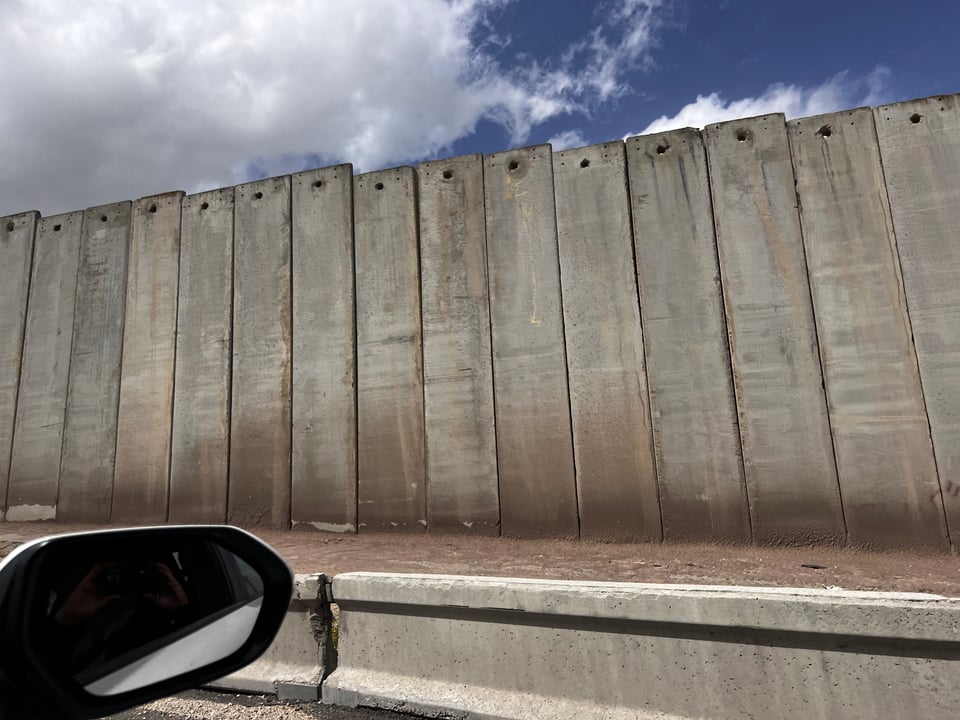
The wall is not a barrier between countries. It snakes throughout the West Bank. It is built on Palestinian land, and it is made from Palestinian land: its blocks are partly made of stone from quarries in the West Bank. In places, it is topped with barbed wire, and it includes tall and imposing military towers for drones and snipers. Israel asserts it is a necessary security measure. The wall separates Palestinians from Israeli settlements in the West Bank. It also separates Palestinians from their own land - from other Palestinian towns within the West Bank, from family members, from schools, even from hospitals.
Soon after arriving in Bethlehem, I enjoyed a delightful lunch at a local restaurant, Karawan, with two young Palestinian men who I met the last time I was here.
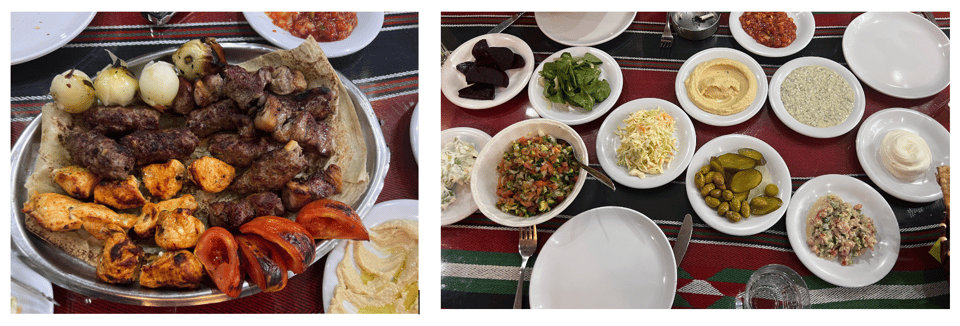
From where I sat, I could see the wall just outside the restaurant. The imposing eyesore is an obstacle to free movement, and a visual representation of Israeli control of the land and people here.
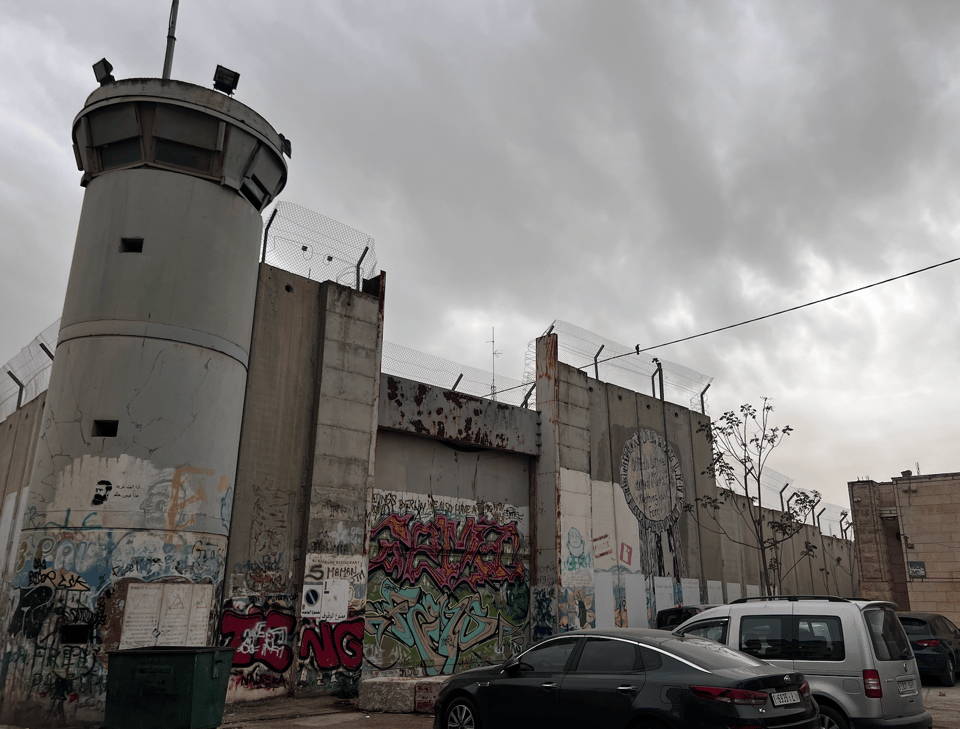
Behind the wall and from many places in Bethlehem, you can see Israeli settlements - that is, the illegal Israeli colonies that are part of Israel’s relentless campaign to take over all the land from the river to the sea.
From the parking lot of the restaurant, we could see the settlement of Gilo. Israel confiscated land from several Palestinian towns to build this settlement, which is now home to more than 30,000 Israelis. Under international law, this settlement is illegal, but Israel disputes this, claiming that it is part of the municipality of Jerusalem.
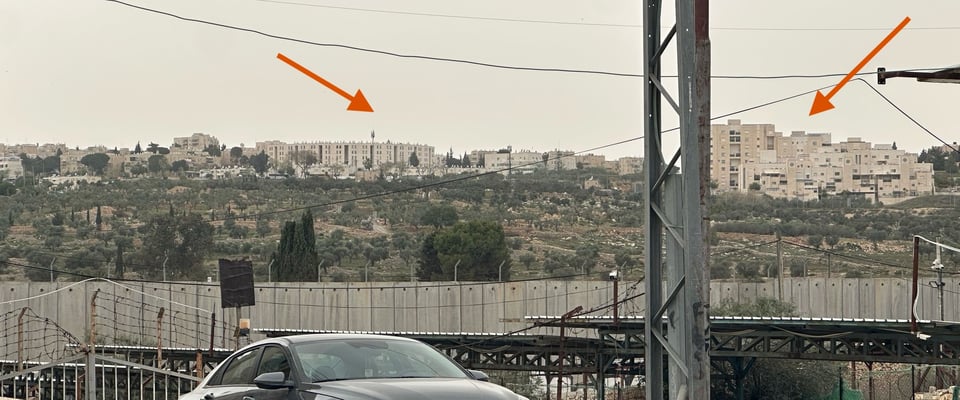
I can see another settlement from my hotel room, Har Homa, with a population of about 20,000. In 1997, the newly elected Benjamin Netanyahu approved the settlement as a way to prevent the growth of the Palestinian city of Bethlehem.
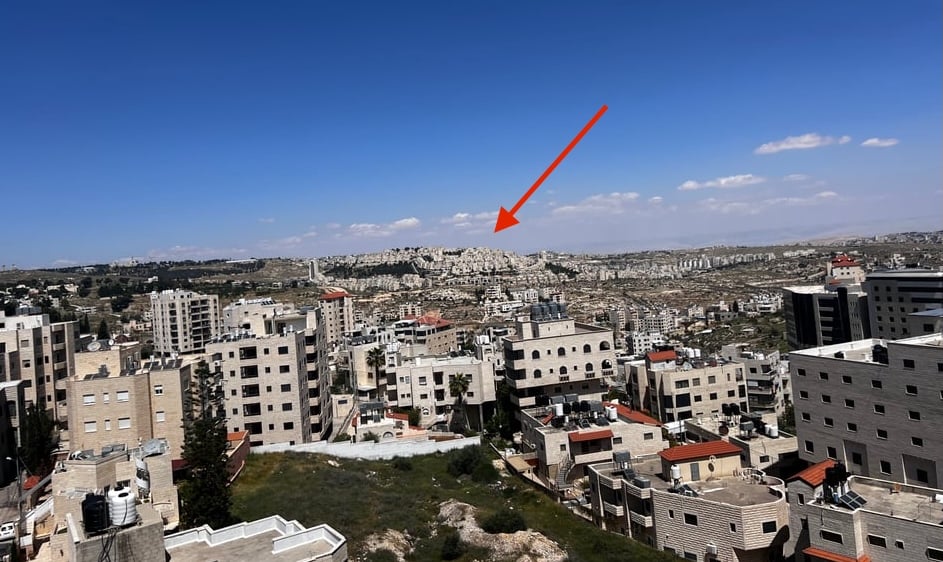
The economy in Bethlehem depends on tourists, and October 7 came just as the city was recovering from Covid. The streets are empty. Not only are there virtually no tourists, but many Palestinians in Bethlehem commuted to jobs in Jerusalem, with permits that Israel had granted them to enter that city for work. After October 7, Israel withdrew those permits, and many people here lost their jobs. If you live near, but not within, a major city, try to imagine being prohibited from traveling there for work (or for any other reason).
THE WALLED OFF HOTEL
The artist Banksy has a hotel in Bethlehem. It’s not the Waldorf, but rather, the Walled Off Hotel. Blocking the view of guest rooms is a portion of the wall that is now painted in clever and creative ways.
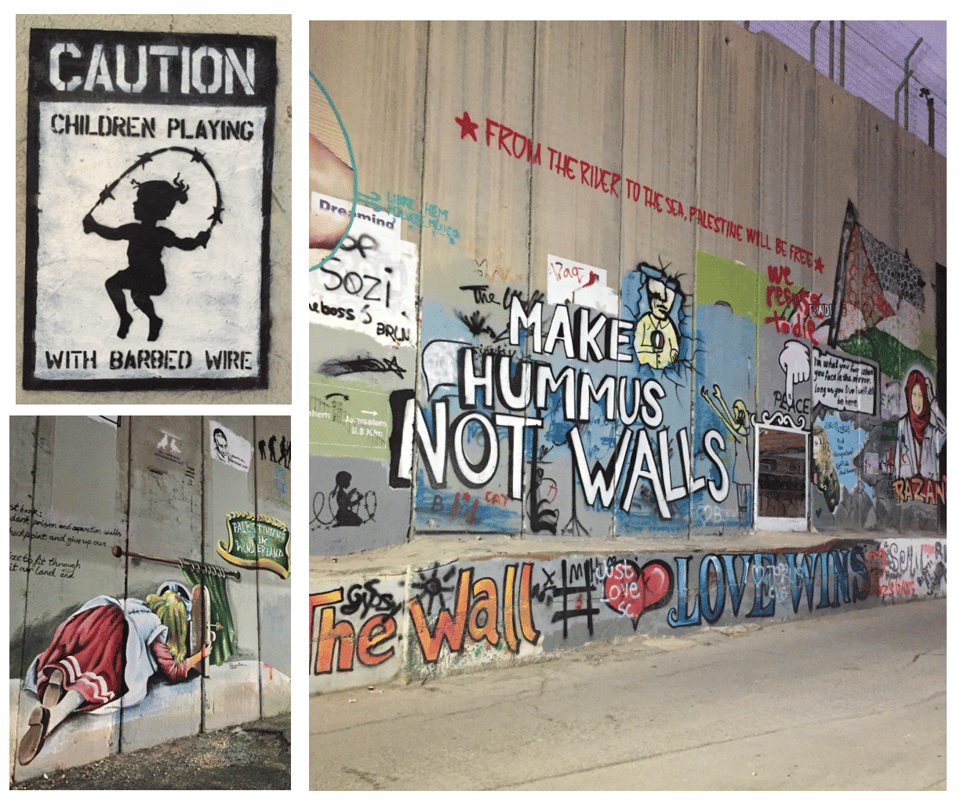
Like most hotels and many businesses in Bethlehem now, the Walled Off Hotel is closed. I’m glad that I’d visited twice before, to see the art that is a painful representation of the repressive conditions that Israel imposes on Palestinians in the West Bank.
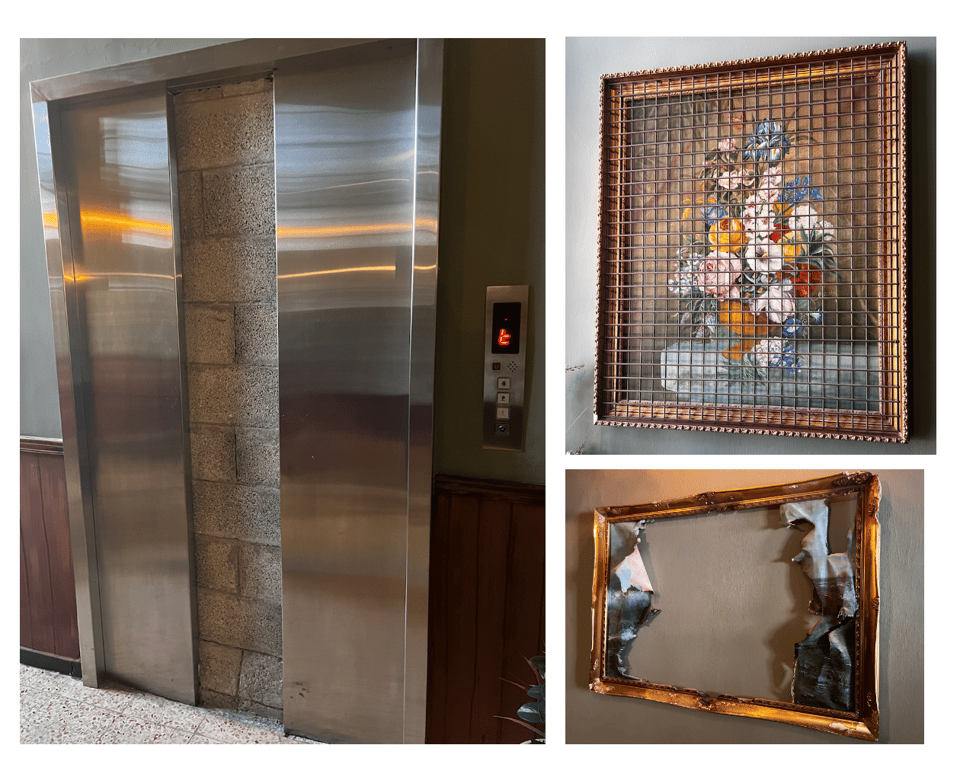
The hotel also includes a beautiful and powerful museum about the wall. I was struck by this quote, from a 60-year-old man: “I owned this land 30 years. My children grew, married, and had their own children here. There are 18 of us now. A year ago, the occupation forces put a fence in front of my house, then came a wall only 5 meters away. In August 2016, with no warning, bulldozers came and destroyed our home, a closed gate was added to the wall. However, I use the nearby wastewater sewer as a way to get to my land, because I still own olive trees and a small room in which I always stay to prove my presence, despite their attempts to dislodge me and expand the wall. In winter the sewer floods, so I climb the fence or anything else. Most important is to get to my besieged land beyond the apartheid wall, until I can get a key to this gate so that I can move freely into my land.”
I have lots more to share about Bethlehem - including the beauty of Bethlehem University, a visit to a family’s home, and more. Until next time.
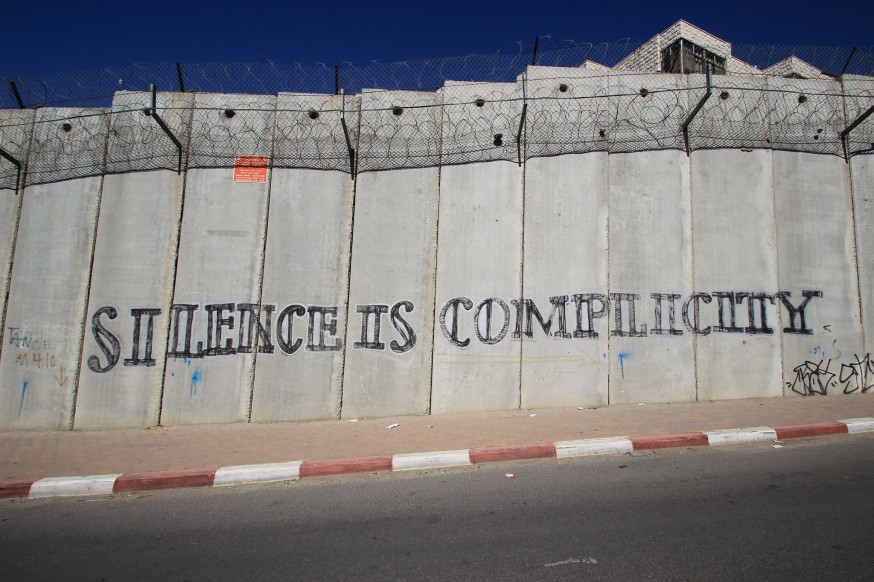
Salaam,
Nancy